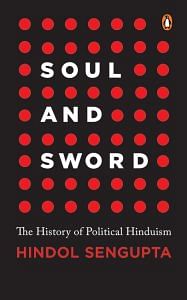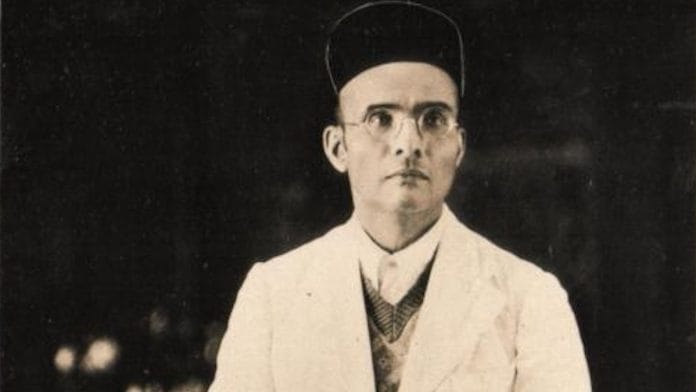There were commonalities, especially in the conception of Indian nationhood. This is particularly evident from the early imaginings of two characters who are today considered antithetical to one another: Jawaharlal Nehru and Vinayak Damodar Savarkar. Perhaps no two political figures in modern Indian history have been considered more antithetical to one another than Jawaharlal Nehru and Vinayak Damodar Savarkar. The self-professed admirer of socialism, Nehru, the first prime minister of India, is seen as an emblem of pluralism while Savarkar, with his sectarian fusing of the Hindu religion with nationalism, is considered parochial and divisive.
But that is an oversimplification of the complex lives of these men. As we saw above with Tilak, Aurobindo, Savarkar and Gandhi, so it is with Savarkar and Nehru. There are ideational, if not ideological, overlaps between them especially in conceptualizing Indian nationhood—they start at the same conceptual points, even though they arrive at different destinations. This is most apparent in their two seminal texts, Nehru’s The Discovery of India (1946), and Savarkar’s Hindutva (1923), both composed when the writers were imprisoned by the British government for participating in the freedom movement. These show how, while the two leaders built differing, even antagonistic political projects, the ideas they used in conceptualizing an independent homeland contained areas of significant convergence, even though their ‘takeaways’ are divergent.
Embedded in these texts are themes that are considered key to the world view of political Hinduism but, as a careful comparison shows, these views were perhaps part of a broader consensus, in some ways, of thinking about the nation at that time. There is a reference to a ‘sacred geography’ which holds, for these men, the ‘hidden heart of national identity’, the shared narrative of masculinity, a framing through the ‘Eastern nationalism’ lens where they feel compelled to contest a sense of cultural inadequacy, and a need to address caste discrimination. This comparison between Discovery and Hindutva shows how the modern Indian nation was created through an ideological tussle whose dispute is well-documented but its commonalities at origin are often ignored. In doing so, it depicts a key argument in this book: the reason for political Hinduism’s sustenance is its historical longevity and the consensus around many of its ideas even though the political manifestations may be vastly different.
What bridges the vision of Nehru and Savarkar in Discovery and Hindutva is a permeating sense of devotion, a language of piety, to a spatial topography that they imbibe with metaphysical meaning. For two men who declare aesthetical disinterest in religion (Nehru, like Savarkar, was famously averse to organized religion and its traditional customs), neither can construct the idea of a nation without theological tropes. ‘I wandered over Himalayas, which are closely connected to old myth and legend . . . the mighty rivers of India that flow from this great mountain barrier into the plains of India . . . The Indus or Sindhu from which our country came to be called India or Hindustan . . .’ says The Discovery of India14, echoing Savarkar’s, ‘. . . the great Indus was known as Hindu to the original inhabitants of our land and owing to the vocal peculiarity of the Aryans it got changed into Sindhu . . .’
The ancients, argued Savarkar, were looking to find a word ‘comprehensive enough . . . to express the vast synthesis that embraced the whole continent from the Indus to the sea and aimed to weld it into a nation’. If nationalism is made up of ‘cultural artefacts of a particular kind’, then these artefacts are to be found, for both Nehru and Savarkar, in geography. If for one, ‘The story of the Ganges, from her source to the sea, from old times to new, is the story of India’s civilization and culture’, for the other, the sense of the nation is created ‘out of their gratitude to the genial and perennial network of waterways that ran through the land like a system of nerve threads and wove them into a Being.’
Both men emphasize the interweave of co-related geographies, a mountain range here, a river there, all of them in conversation with one another, using the idea that ‘geography is a science of relationships’. Their imagined communities are plotted in scriptural terms with Nehru pointing to ‘vast numbers of common folk were continually travelling to the numerous places of pilgrimage . . . All this going to and fro and meeting people from different parts of the country must have intensified the conception of a common land and a common culture . . .’ and Savarkar claiming to quote from the ancient Vishnu Purana, ‘The land which is to the north of the sea and to the south of the Himalaya mountain is named Bharata’.
But using this shared conception, they arrive at divergent destinations. Nehru talks of an India built as an ‘ancient palimpsest on which layer upon layer of thought and reverie had been inscribed, and yet no succeeding layer had completely hidden or erased what had been written previously’. But for Savarkar, assimilation (and not coexisting layering) is the key to nationhood. For instance, for Muslims, he wants ‘worship as heroes our ten great avatars only adding Muhammad as the eleventh’ as the criterion for entry into the embrace of nationhood.
This difference is stark, for instance, in describing Mahmud of Ghazni’s invasion of India.
‘Mahmud was far more a warrior than a man of faith and like many other conquerors he used and exploited the name of religion for his conquests . . . He enrolled an army in India and placed it under one of his noted generals, Tilak by name, who was an Indian and a Hindu. This army he used against his own co-religionists in central Asia. . . where religion is goaded by rapine and rapine serves as a handmaid to religion . . . such were the forces, overwhelmingly furious, that took India by surprise the day Mohammad [Mahmud] crossed the Indus and invaded her’.
While they can agree with why their homeland is glorious, Nehru and Savarkar part ways in defining the enemies of India and their attributes. In Nehru’s imagination of India, there is no defined ‘other’ whereas the ‘other’ for Savarkar is acutely established. For Savarkar, India is defined by influences that it must repel, while for Nehru, even in the most repellent of experiences, India is constructed of that which it absorbs—even from those that attack it.
 This excerpt from Hindol Sengupta’s ‘Soul and Sword: The History of Political Hinduism’ has been published with permission from Penguin Random House India.
This excerpt from Hindol Sengupta’s ‘Soul and Sword: The History of Political Hinduism’ has been published with permission from Penguin Random House India.






